Create with AI – pros/cons
*Are you wondering if this article has been generated by AI?* I don’t blame you.
Thoughts on Creativity
New inventions are more common today than at any other time in history. Daily routines shift and change to include more gadgets and task automation so frequently that many people adopt new technology into their lives without hesitation. Despite these innovations, our fundamental nature remains static. Our emotional well-being still has the same limitations, no matter how many new smartphones become available on the market.
With each new invention, there’s always a significant fear for the creative industries concerning the role technology plays – especially with machine learning becoming more advanced and accessible to the public. However, because art and music support the human experience on such a personal level, the worry that “robots” will replace artists seems unfounded.
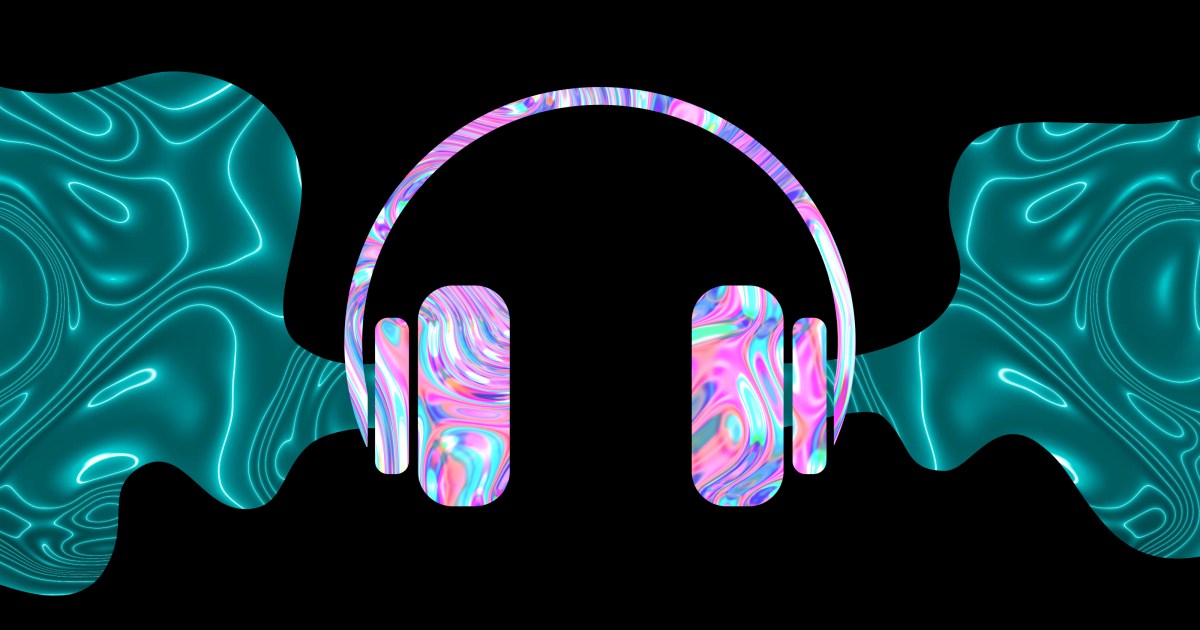
AI does not present a threat to creatives who can be flexible in their perspective of the world and understand the purpose their art might serve. Art will continue to provide healing on an individual level. If fear arises when considering the future of art and music, perhaps the question lies not in defining the unknown but in the type of validation the creative seeks. Look past the worry that a creation will be devalued and focus more on the impermanence of value itself, or at the very least, the subjectivity of “value.”
No matter how many flowers might bloom, only a select few are deemed worthy to be given as gifts. Similarly, no matter how many creations exist in the world, the most special will always be the ones that are found. Whether it is through a lifetime of discipline or a few steps toward creativity with AI, the value is left to the beholder and to the one who finds a blossomed creation amongst the fields of endless content.
Robots can’t replace creatives because the very act of experiencing art and music is inherently human. Artistic communication will forever be a human experience, no matter the amount of technology involved. And it’s safe to say that the human story behind the creation process of works will ultimately give them more meaning than a quick, algorithmic-based process.
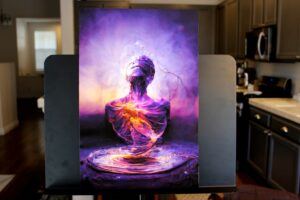
10 Important Topics to Discuss
Main points discussed in this article:
- Prevalence of New Inventions: New technology is more common today than ever, and people quickly adopt it into their daily lives.
- Human Emotional Stability: Our fundamental emotional well-being remains unchanged despite technological advancements.
- Creative Industry Concerns: There is significant fear in the creative industries about technology’s role, particularly with advanced machine learning.
- Art and Human Experience: Art and music support the human experience, making the fear of robots replacing artists unfounded.
- AI as a Creative Tool: AI does not threaten flexible creatives who understand the purpose of their art and can be used as a tool for brainstorming and overcoming creative blocks.
- Subjectivity of Value: The value of art is subjective and impermanent, and the story behind its creation adds meaning.
- Human Element in Art: The human experience of creating and experiencing art and music cannot be fully replaced by technology.
- Experimenting with AI in Music: The album “a.NOTHER i.NVENTION” was created using AI to showcase the current ability of AI in music generation and to compare it with human-created music.
- Collaboration with AI: AI-generated music is a collaborative process, involving user decisions and interactions with the technology.
- Future of Creativity and Technology: The role of musicians and composers will continue to evolve with technology, necessitating discussions about creativity and the
Creating with AI
So much of the world is now publicly influenced by machine learning and it seems companies now feel compelled to weave some form of AI into their services or workflows just to stay prominent in their industries. Search engines, art creation, customer service, text responses, etc., have all been forever changed by the option of “AI” – a quick, and now quality, option. I hadn’t been too bothered by it until the generation of art gained a new level of complexity a few years ago. And now, music has reached a similar level.
Back in middle school, I was blown away by the first version of a chatbot that I remember, called CleverBot (CleverBot.com), where I would spend hours trying to confuse its logic, wondering what crazy things it would say next. Now I find myself doing the same with ChatGPT.
Ever since CleverBot, I’ve always been interested in how machine learning will change the face of music and art. Art generated by AI has now been publicly available for a few years, but there hasn’t been a music generator that I’ve seen that’s been too worrisome for us musicians. And it’s always been a bit reassuring that there hasn’t been an AI music generator to contend with in the music industry. But a friend recently told me about Udio AI and how it has officially reached a level where it blew him away.
Seeing as how I was already creating this album with AI, I felt it appropriate to take a look at Udio. Once I saw how right my friend was, I couldn’t help but include it in the album as a public experiment (maybe even a public announcement: “Hey, this is where we are now with AI… FYI.”).
Why create an album with artificial intelligence?
Because it’s controversial!
For years, I’ve wrestled with the idea of artificial intelligence and art (like most of us in the industry have). Afraid of becoming discouraged, I’ve always been good with staying positive:
“Instead of being scared or boycotting, how can AI be useful for me as another tool?”
As my step toward using the newest available AI, I decided to create an album where the lyrics were generated. I began working with ChatGPT to create poems for this album and a few weeks into the work, I also began experimenting with Udio. It was then that it struck me how far AI has come and how it needs to be known to my peers. So, I’ve created this album with a lot of artificial intelligence, so it’s unavoidably obvious how advanced AI has become.
Did you know the picture of me on the album cover is also a generated image?
Thanks to Aragon AI and its business headshot generation service.
It’s not a real photo of me! WHAAAAAT.
While nearly all the lyrics in this album have been generated, it’s about every other song where the music has also been generated (full 11-track album available only on Bandcamp; 7-track version on streaming platforms). I decided to pair, side by side, my music with Udio’s generated music because there are differences between the quality of timbre, expression, etc.
It is only a matter of time before machine learning catches up to all the nuances and details in human-written music. So until then, I think it’s important we prepare ourselves for the inevitable, and by doing so, maybe redefine the meaning of human-made music and its value in our lives.

Behind the title of the album.
The album is entitled A.I., “a.NOTHER i.NVENTION,” to emphasize how we shouldn’t be too worried. In the grand scheme of things, artificial intelligence is just another invention.
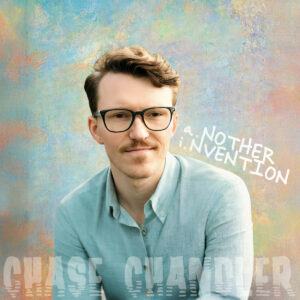
Every invention in the technological era has spurred fear in the creative community, such as the radio, synthesizers, MTV, and music streaming. The increased access to music creation, I think, highlights why time-tested music still stands apart. AI has yet to create, by itself (without any human interference during the creation process), a song that lasts the test of time.
Why include “Udio” in the album?
The full intended album is available on Bandcamp, but CD Baby does not accept AI-generated music. I feel this may change in the future as trends in music creation change and (might) include more AI. But for now, I’ve made the fully intended album available through Bandcamp.
- On Spotify (& all online streaming platforms), there are 7 tracks
- Releasing July 20
- On Bandcamp, there are 11 tracks with 3 bonus tracks
- These extra tracks are all generated with Udio
- Available privately through this link to Bandcamp, then publically on July 20
It makes me very uncomfortable to include generated music. But in the spirit of embracing trends, I decided to work with AI as my attempt to come to terms with the changing times. Experimenting with Udio until I found its creative limits also helped soothe my fear of this new musical reality. Initially, this was my original plan with ChatGPT’s lyric/poetry writing as well, but it never occurred to me that I’d need to do the same with generating music. But, I knew I had to include generated music in the album as soon as I discovered the level it’s at now. Trust me, though, it has been a challenge for me.
Udio builds AI tools to enable the next generation of music creators. We believe AI has the potential to expand musical horizons and enable anyone to create extraordinary music.
But there has been a bigger difference than I thought during the creative process in generating full songs with Udio versus writing songs on my own. And it’s something that convinces me that the need for music creation by humans won’t be and can’t be fully replaced by digital means.
“Circuits & Dreams” Preview of Folk Pop Track from Full Album “a.NOTHER i.NVENTION”
Creating songs with AI is more of an exploration of musical phenomena and trends in genre/style, like stumbling across a fun journey or a “pick your own adventure” story. It’s more a form of entertainment than anything else. Writing music without the aid of music generation is more therapeutic for the individual because something very human is often expressed.
[ Download “Conversations with ChatGPT” PDF ]
*Download the PDF Document of my conversations with ChatGPT when creating the lyrics for this album*
It’s this difference that has given me hope back amid all this AI-inspired artwork and music. The very benefits that creatives rely on in their chosen art form are actually what fuels the story behind the creation. This is what gives art and music value beyond the creation itself. The time it takes to create is in turn what elevates the creation to a higher level of meaning for the audience.
“Lament of my Toe” Preview of Opera Track from Full Album “a.NOTHER i.NVENTION”
Technology has continued to improve our quality of life and speed up processes within daily routines, such as microwavable dinners. But microwavable dinners can be more easily forgotten. The time it takes to prepare, cook, and serve a meal is instantly far more meaningful: the time it takes to not only prepare the meal but also the time investment in perfecting the skill of cooking, all adds innate value to the meal itself.
I believe this applies to art and music as well – when it is known that the artist donated their life to their craft, their work is viewed with much more attention than a generated image from AI. That being said, there are too many grey areas to consider this situation black and white. And it could suggest a need for more social experiments on the matter.
Pros and Cons – Create with AI
After experimenting with Midjourney’s art generation tools and now Udio (and testing out a few others here and there), I figured I’d make a list of pros and cons from the creator’s point-of-view when using artificial intelligence in art and music creation:
Pros of AI Creation
- Quickly brainstorm ideas and creative direction
- Calculate options and come to potential solutions
- Easily generate examples of styles or genres, highlighting human trends in creativity
- Helps creator push through creative/writer’s block
- Collaboration with a large database of historical examples/styles/genres
- Helpful in creating outside of the artist’s preferences
Cons of AI Creation
- Less customization in details and nuances
- Difficult to create multi-layered meaning; little or no depth of expression
- Difficult to bend the theoretical rules of art and music in a unique way that still makes sense to others
- No personal feeling of expression or communication of emotions during the creative process
- Little to no therapeutic benefits
- Stays an intellectual pursuit; discovering by way of adventure into the unknown created by AI
- No “flow state” in the creative process; not active enough
Music is often listened to for a balance of entertainment, intellectual stimulation, and emotional release (among many other things). However, I’ve found that generating music with AI is limiting in the ability to “feel” during the creative process.
Let’s compare it to the process of solving a puzzle – it’s engaging, you see the puzzle pieces coming together, and the complete project brings a feeling of success, but there is no release from an expression of emotional tension when completing a puzzle (other than distracting yourself from said emotions).
The therapeutic benefits of creativity include a physical element that brings one into the present. I could not find this happening with any of my art or music experiments via AI platforms. I think that is because there’s no movement, nothing involving the body. Even producing digital art and music on computer screens tends to involve using the hands more consistently (using the mouse, typing on the keyboard, etc.). When compared to an AI generation platform, the creator just clicks a button or two and waits. Admittedly, the approach does have little room for creativity (whether it’s a text prompt or a “choose-the-best-option” process). But sitting and waiting is one of the main roles of the human.
When you microwave dinner and someone asks, “Did you make dinner?” you might answer yes, but it’s not the same as cooking food from scratch.
Microwavable dinners are “made” by pressing a button and waiting. The choice was in what microwavable dinner should be eaten. So there is creativity in choosing the right combination of food to microwave, but is it art? I argue that it is not nearly as much of an art as traditional cooking since there are more numerous choices to be made by the cooks themselves. Each choice to be made is an opportunity for the human element to take shape.
So if a song is generated, did you make the song? Well, sort of, but in my eyes, it was “found” by the creator. This song wouldn’t exist if it wasn’t for “the button” being pressed; does that mean it is ultimately created by the human? I argue that this process is more of a collaboration with artificial intelligence. So at most, the music is co-created by the human.
This is why I’ve listed Udio as a “featured artist.”
Because I feel I collaborated with Udio.
Because while my part did aid in creating the result, it was Udio who made most of the decisions. The process involves Udio spitting out two 30-second long options from a text prompt and once one is chosen, it creates two more 30-second options, adding on to the previously chosen 30 seconds. These songs would not exist without the user’s involvement and decision-making, but it does go both ways. Therefore, a collaboration seems like the most appropriate description and attribution to these songs.
Then again, most of this is subjective. And it is hard to say at which point the process of creation should be attributed to the inventors of a tool. Without the piano’s inventor or the piano tuner, we would not have piano players or compositions for the piano.
At what point should we consider playing the piano a collaboration with those involved in maintaining or building the piano?
As most of my peers in the art and music industry might have already noticed, it is difficult not to talk about the involvement of artificial intelligence in our industry without diving deep into the philosophies of creativity and the purpose it serves for us. Maybe the fear of AI can spark conversation about music and art in ways that bring more support and aid to the industry and toward music education.
While I might suggest certain opinions, ideas, or thoughts, my main goal is to spark that very conversation. Instead of pretending that AI won’t affect us, we should begin talking about it and preparing for how technology will continue to change the role the musician/composer plays in the music industry’s future.
*Are you still wondering if this article has been generated by AI? No. It hasn’t. I promise.
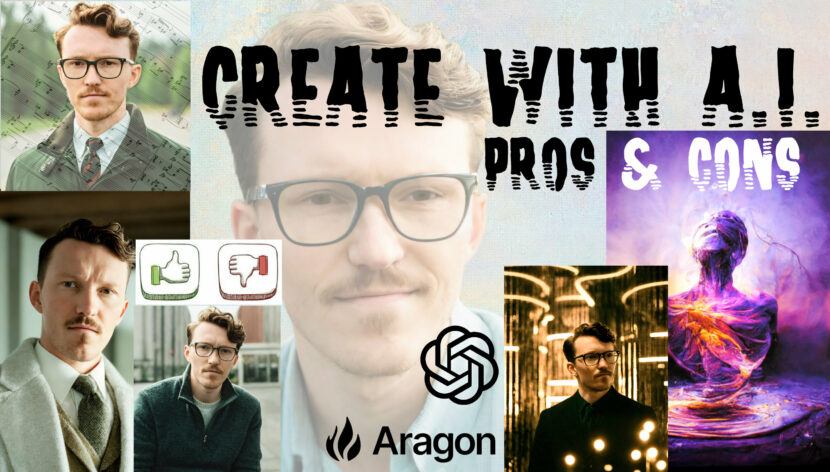


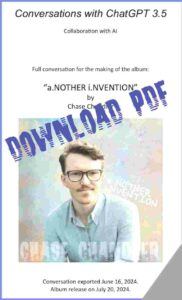
No Comments